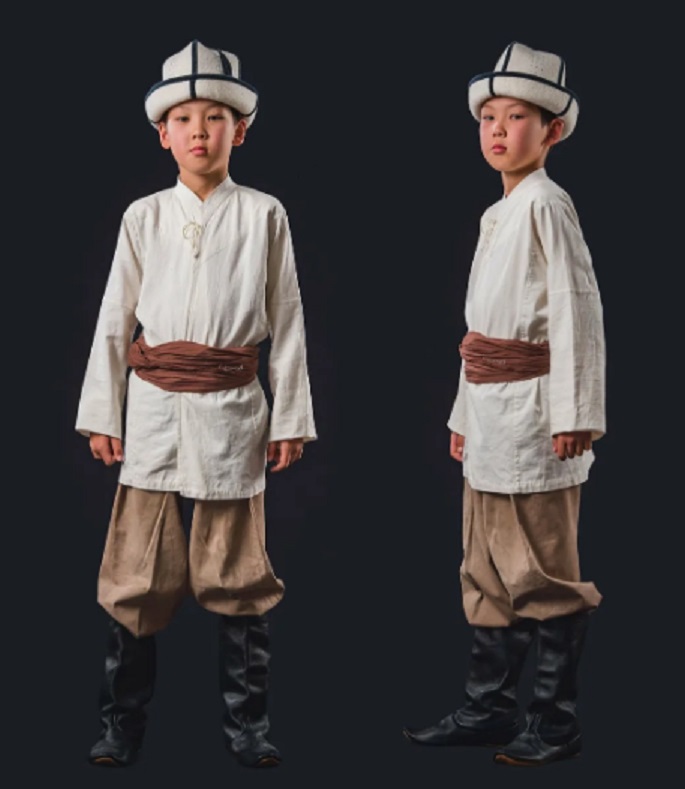A saddle blanket made from strips of "kadjary" fabric
Fabrics made using the "kadjary" technique are widely spread in southern Kyrgyzstan, known to the Pamir Kyrgyz, and are produced by Kyrgyz living in southern Xinjiang. Uzbeks, Kazakhs, and Karakalpaks also use a similar technique.
Like the "terme" fabric, "kadjary" belongs to the type of patterned fabrics. The pattern is created using warp threads dyed in two colors and is only revealed on the front side. A distinctive feature of this fabric is that the reverse side under the pattern has "free" threads that do not participate in its formation and only appear on the front side when weaving the next pattern. The alternation of "free" threads and threads forming the pattern is rhythmically consistent in the composition. The weft of the fabric is not visible.
For the warp of "kadjary," the yarn is made thinner than for "terme." Usually, a single dark-colored thread is used for the weft. "Kadjary" is a soft, smooth, and relatively thin fabric; this is its advantage over "terme."
The threads prepared for "kadjary" fabric are usually dyed in red, blue, and orange colors. White and brown threads are more often used in small patterns or in side stripes. Despite the fact that the fabric incorporates familiar and favorite colors of the Kyrgyz, their ratio in the overall coloring does not correspond to the traditional equality of background and pattern observed in ancient Kyrgyz products. Here, the background is clearly distinguished.
A distinctive feature of "kadjary" fabric is the presence of longitudinal stripes. Usually, smooth stripes alternate with stripes filled with patterns. Along the stripe, one or several types of patterns are rhythmically repeated. They have their own style and sharply differ from the patterns of "terme" fabric. Most patterns on "kadjary" fabric have elongated shapes. Most likely, their origin is related to the decoration of narrow stripes.

Main ornamental motifs of "kadjary" fabric. 1 — "tarakcha"; 2 — "chatyshma"; 3,4 — "tumarcha"; "iyrek"; 5, 10, 11 — "it kuyruq"; 7, 9, 13, 14, 15, 22, 24, 25 — "kochkorok", "kochkor muyz" or "kaykalak"; 8 — "kaychi"; 12, 19, 23 — "pashaiy kochot"; 16, 18 — "omurtka"; 17 — "it taman"; 20 — "soloosun tyrmak" or "takta kochot"; 21 — "besh keshtе kochot"; 25 — "kyal"; 26 — "bagjagay", "karga kanat".
The most typical motifs for "kadjary" fabric are diamonds, triangles, hook-shaped, and S-shaped motifs. In addition to the commonly accepted names in Kyrgyz ornamentation, some specific names are noted, such as tarakcha (comb), kılıç (sword), ay puska (moon pattern), which are also found in the names of the same fabric among Uzbeks. The pattern called bagjagay is very typical for "kadjary" fabric. It is woven on a narrow strip, which is most often used by Kyrgyz for edging saddle blankets and "shalcha" mats. There are also many other motifs that are widespread in Kyrgyz weaving. For example: the popular diamond in Kyrgyz ornamentation or wavy lines with curls, multi-tiered figures with jagged edges.
An analysis of "kadjary" fabric allows us to say that it is not a legacy of the deep past of Kyrgyz applied art. The ornament and artistic features of this fabric are not characteristic of the Kyrgyz style. It is believed that this fabric was introduced into Kyrgyz life from the west.















































